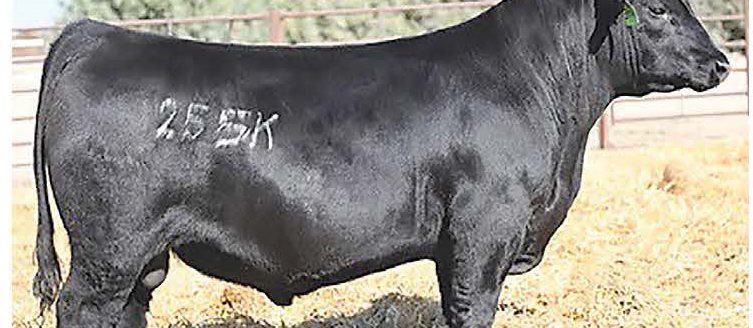Holmquist kitchen for family, friends, and newborn calves

Perhaps the most sacred room in Tom and Marlysue Holmquist’s 98-year-old home is their kitchen.
The warm, happy space in the northwest corner—complete with a breakfast nook hitched to a screened-in porch—is where much magic has happened. (They are pictured above.)
Nostrils can proudly dictate many special moments of this farm family, from the aromas of succulent foods, such as Marlysue’s cinnamon rolls to chicken noodle soup. Tom’s late mother, Mary Holmquist, used to dazzle with her meatloaf smothered in mushroom gravy.
And for a week or three very early every spring, comes the sweet stench of newborn Angus calves.
“It smells like a barn,” quipped Marlysue, a retired Bethany College professor whose eyes sparkle behind her spectacles, recalling countless days and nights, making those critters comfortable.
“Tom will come in out of the truck, carrying these 70-pound animals,” she said.
After kicking off his muddy rubber boots, the husband and wife would swaddle the shivering calves in old sheets and towels and watch as their conditions rose from critical to survivable on the specially heated kitchen floor.

“Sometimes we just need to dry them off and get them warmed up a little bit, get some colostrum milk replacer in them, and get them back to their mothers as fast as possible,” Tom said. “It improves their chance of survival.”
A fighting chance
Dozens of the beautiful mammals, sporting shiny black coats, each draping chunks of the Holmquists’ livelihood, are brought to the temporary sanctuary when outdoor conditions are nearly unbearable.
“Marlysue’s very empathetic with those little creatures,” Tom said. “We use all her bath towels and her hair dyer, and then we try to clean up.”
Whatever’s required to save their lives.
“We take care of our little guys,” she said.
Thanks to some lucky timing, calving season 2024 has so far been kind to the couple.
“It was a lot colder during mid-January (below zero with windchill factors dipping to 20 below),” Tom said. “I was a bit nervous then, but it’s been beautiful out there[DM1] since we started.”
As of the last day of January, the Holmquists had welcomed five new babies, and none had to be sheltered in the kitchen. A sixth was stillborn. February rang in with two more healthy babies.
Harkening back to more difficult years, Marlysue unveiled photos of the four-legged younguns born close by in winter pasture matted with tall and thick native grass. The 45-acre tract is protected from the wind by thick rows of hedge trees.

Busy times
Several times a day, Tom boards his four-wheel-drive diesel pickup for a run to the birthing grounds, rolling and bouncing past ancient buffalo wallows. He points to an area where Kanza Indians camped when they migrated to the region to hunt the huge nomadic, majestic beasts.
Tom has practiced the farm-ranch lifestyle since boyhood, and begins to prepare for calving in early January, stocking up with ear tags, extra colostrum and more. Just in case, there is calf pulling gear in the pickup.
Sign up for HPJ Insights
Our weekly newsletter delivers the latest news straight to your inbox including breaking news, our exclusive columns and much more.
Marlysue was raised in Los Angeles, a city girl. She happened onto farm life, meeting Tom on her first day of teaching fifth grade at Marquette. Both graduated Bethany College in Lindsborg, but were not acquainted until a chance meeting at the tiny school west of Lindsborg, where Tom was the band instructor.
“He came into my classroom and asked me if I could play the piano. I said ‘No,’and he said, ‘I wonder when they’re going to hire someone decent around here who can play piano?’ ” Marlysue said. “We didn’t hit it off very well, and then we got married like a year later.”
At some point during the courtship, her farming apprenticeship ensued. They were blessed with three little humans as well — Ryan, who teaches vocal music at Salina Central High School and farms with Tom; daughter Majkin Holmquist, a Yale University professor and a playwright in Brooklyn, N.Y. soon to debut a play off Broadway; and John Holmquist, a tax accountant who winters in the Dominican Republic.
“The kids had bucket calves in 4-H, and I learned along with them,” Marlysue said.
She also spent 23 years as a Bethany College professor teaching students how to be teachers.
A different classroom
Harsh calving conditions most years “are just part of the deal,” Tom said, and not all of the little ones make it past those critical first hours.
“An acceptable number is nine out of 10 surviving, but we try real hard to beat that,” he said. “Most years, I run about 95%.”
While he flourished as an educator, Tom was always drawn to the life of nurturing a herd of cows and calves and besting the yearly calving gamble for 55 of his 69 years — since high school, while farming with his father, Darrel Holmquist.
Tom finished his teaching career as a history teacher in the Smoky Valley School District. He has written four books focusing on local history and Swedish settlements.
Some calving seasons are painful to bear, among them February 2021.
“It got so terribly cold, worse than (January this year),” he said. “I was losing calves right and left.”
When the winter is not so extreme, calving success is easier. “If they’re in a place out of the wind, or with no wind, and they have some straw or good pasture to lay on, they’re probably gonna be OK,” Tom said. “If there is wind, we will often take newborns into the kitchen at the house, but we get them back to their mothers as fast as possible.”
Efficiency necessary
Efficiency is a must in his mid-size operation that also raises wheat, grain sorghum and soybeans, as well as brome, prairie, and alfalfa hay for the cattle.
“It all depends on how well you’re taking care of your cows,” Tom said, mentioning his veterinarian, Kenny Johnson, of Hobbs Creek Veterinary Service.
“I’m very careful to make sure my cows and calves all have their vaccinations to take care of their health as much as possible,” he said, as weaned calves with the necessary shots will often fetch a premium at the sale barn.
The potential this calving season is to add 75 to 80 calves to the Holmquist spread, Tom said, but there are always unknown perils looming.
“The national herd is down and the prices are higher,” he said. “What we can’t control is the weather.”
Tim Unruh can be reached at [email protected].
Bitter cold was tough for some, but weather, markets improved
By Tim Unruh
One good side to Vaughn Isaacson’s cow-calf operation was moving his calving season to March, but there were losses during January’s deep freeze.
“This weather’s not been kind to the cattle people,” said the Saline County farmer-rancher.
“One morning when it was 20 below, I felt sorry for (the cattle). I felt sorry for me, too,” Isaacson said. “I heard of some horrific death loss numbers in the feedlots and backgrounders. Cattle huddle up in the corners of the pens. It’s not good.”
Keeping the critters out of the wind is essential, he said, but they still want to pile up a little bit. Some were lost to heart attacks.”
Fat cattle market fluctuations have had Isaacson perplexed. “The price was really good, but then the market kinda dipped in December,” he said. “We were selling fat cattle in the $1.80s, and all of a sudden a cattle-on-feed report came out and we were selling in the low $1.70s (per pound). We had a 10- to 15-dollar drop (per hundred pounds) because of that report.”
Early February sales returned to the $1.80s, Isaacson said, in part due to the “substantial death loss” in January.
“Now we’re on the other side of the roller coaster, going up,” he said. “These reports overreact the fat-cattle market dramatically. It’s kinda like being a school teacher. You know some days won’t be as good as others.”
For comparison, he said, the calf market “is better than it’s ever been,” with 500-pounders selling for $3.25 to $3.40 a pound.
Cool subsides, NWS forecasts additional moisture
The National Weather Service measured the coldest January in Salina since 1985 with an average temperature of 25.8 degrees, 5.3 degrees below normal, and the 23rd coldest since 1900. Salina Regional Airport received 0.82 of an inch during the month, which was 0.11 above average.
Wichita was 4.4 degrees below normal, coldest since 1996, and received 1.76 inches of moisture, 0.91 of an inch above average. Russell was 5.6 degrees down, recording the coldest January since 1993, and received 0.57 of an inch of moisture, 0.02 above average.
January ended relatively balmy with Wichita, Salina, Chanute and Russell all posting high temperatures in the upper 60s.
The weather service expects an El Niño weather pattern, with near to above-average temperatures and near above average precipitation for the remainder of the winter.



